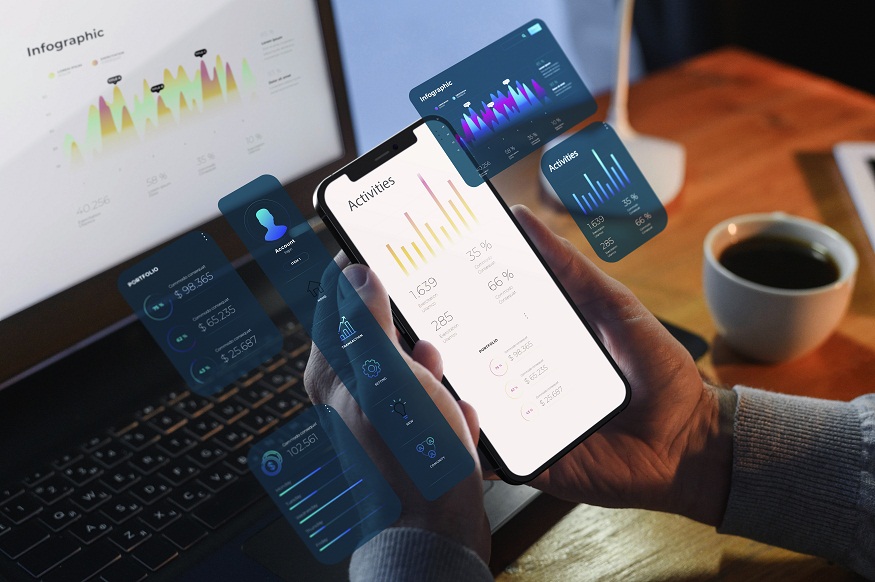In today’s fast-paced world, any notion of time-consuming paperwork feels like a trip down memory lane. Once upon a time, securing a loan meant wading through mountains of documentation, enduring endless waits, and navigating the complex bureaucracy of financial institutions. Now, we find ourselves in an era where Online Personal Loans can be secured with just a few clicks, revolutionising how individuals access funds. But how did we get here, and what does this mean for the future of borrowing?
The Traditional Landscape: A Complex Maze
Historically, borrowing money was no small feat. The “traditional” loan process involved significant hurdles. Prospective borrowers were required to submit an array of documents—from proof of identity to income statements and credit histories. This process was not only time-intensive but also emotionally taxing.
The reliance on in-person meetings meant potential applicants had to visit banks or financial institutions, often multiple times, and engage in personal interviews. Rejection rates were high, and the criteria for approval were stringent, forcing many to turn to informal means, such as borrowing from friends or family. This scenario paints a vivid picture of the challenges faced by our predecessors.
The Digital Revolution: A Game Changer
Rise of Technology in Finance
The dawn of the internet era brought about a tidal wave of change across various industries, and the financial sector was no exception. As technology began to permeate financial services, the introduction of online platforms simplified many traditional processes. Banking online introduced a level of convenience previously unimaginable—not only for transactions but also for loans.
Loans began transitioning to digital platforms, marking a significant shift from the cumbersome paper-based processes. A consumer could now apply for a loan online, from the comfort of their home, and receive feedback in a fraction of the time previously required.
Growth of Online Personal Loans
Online Personal Loans epitomise the digital transformation of the loan industry. Unlike their traditional counterparts, which often required a one-size-fits-all approach, online loans offer customisation and flexibility. Borrowers can specify amounts, tenure, and even interest rates that fit their unique financial situations.
Numerous fintech companies have emerged, each offering distinct advantages and features. An individual can now compare options across platforms, ensuring they get the best deal available, often enjoying lower interest rates than banks traditionally offered.
How One-Click Loans Became Possible
Advances in Technology
The pace at which technology evolved played a pivotal role. Artificial Intelligence (AI) simplifies credit assessment processes, while blockchain technology ensures the security and privacy of sensitive information. Thanks to the integration of these technologies, both the application and approval processes are increasingly efficient.
User Experience (UX) Innovation
The focus on UX design has transformed the way loans are offered online. Streamlined interfaces, intuitive navigation, and mobile optimisation make obtaining a loan as simple as buying a book online. Some platforms even offer app-based applications, enabling users to apply for an Online Personal Loan with a few taps on their smartphones.
Evolving Regulatory Frameworks
Regulatory bodies have adapted to these rapid changes, implementing safeguards to protect consumers and ensure transparency. This evolving regulatory framework has boosted consumer confidence, enabling more people to embrace digital lending platforms.
Benefits and Challenges of Digital Borrowing
Benefits
- Convenience and Speed: One of the most significant advantages of online loans is the reduction in time. Applications that once took weeks can now be processed in days, if not hours.
- Transparency: Online platforms often display all relevant terms, conditions, and fees upfront, enabling borrowers to make informed decisions without hidden surprises.
- Access and Inclusion: Digital borrowing platforms have increased access to financial services in underserved areas, breaking down geographical barriers.
Challenges
- Cybersecurity Concerns: As with any online service, there is a risk of data breaches. Ensuring robust security measures are in place is paramount.
- Digital Literacy: While technology is a boon, it can also be a barrier for those uncomfortable or unfamiliar with digital platforms.
- Over-dependence on AI: Relying heavily on AI can sometimes overlook individual circumstances that a human might consider in a loan decision.
The Future of Borrowing
Predictive Analysis and Customisation
The future promises even more personalisation. Predictive analysis could foresee borrowing needs before they arise, offering personalised loan products tailored to individual habits and financial behaviour.
Blockchain and Smart Contracts
Blockchain’s potential remains vast, especially in enhancing transparency and efficiency. Smart contracts may soon eliminate middlemen, automatically executing agreements based on pre-set conditions.
Enhanced Financial Inclusion
As technology spreads, even the unbanked and underbanked populations will have access to loan products, fostering greater economic equality.
Conclusion: Embracing the Change
The journey from cumbersome paperwork to one-click Online Personal Loans underscores a broader trend in society towards efficiency, accessibility, and innovation. While challenges remain, the benefits far outweigh the hurdles, heralding a new age of borrowing that is inclusive, convenient, and tailored to individual needs.
As we stand on the brink of further innovations, the onus is on us to embrace these changes and ensure they are accessible to all, laying the foundation for a future where everyone’s financial needs are met swiftly and securely. So whether you need funds for a dream project or an unexpected expense, the power of borrowing is now, quite literally, at your fingertips.





